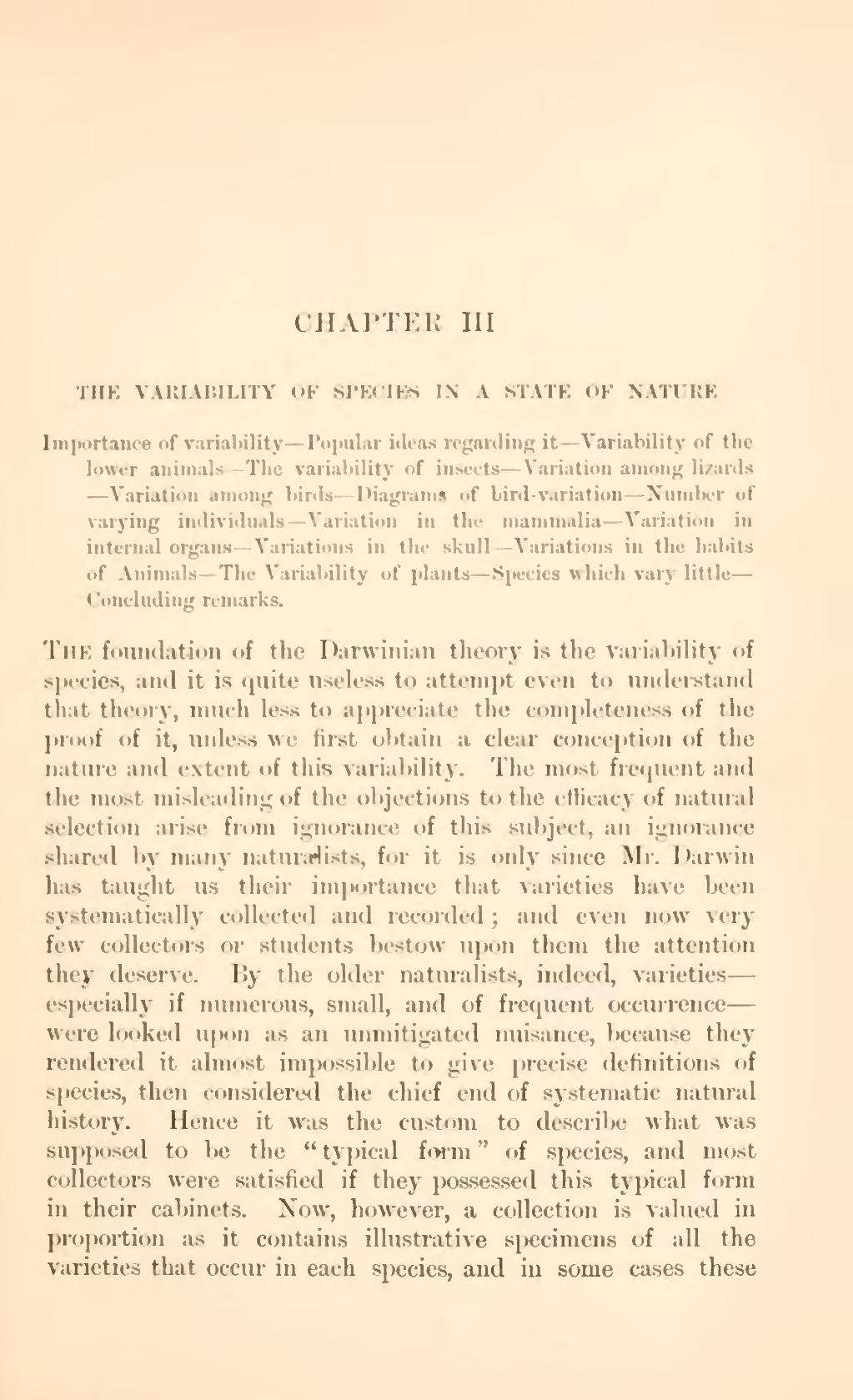CHAPTER III
THE VARIABILITY OF SPECIES IN A STATE OF NATURE
Importance of variability—Popular ideas regarding it—Variability of the lower animals—The variability of insects—Variation among lizards—Variation among birds—Diagrams of bird-variation—Number of varying individuals—Variation in the mammalia—Variation in internal organs—Variations in the skull—Variations in the habits of Animals—The Variability of plants—Species which vary little—Concluding remarks.
The foundation of the Darwinian theory is the variability of species, and it is quite useless to attempt even to understand that theory, much less to appreciate the completeness of the proof of it, unless we first obtain a clear conception of the nature and extent of this variability. The most frequent and the most misleading of the objections to the efficacy of natural selection arise from ignorance of this subject, an ignorance shared by many naturalists, for it is only since Mr. Darwin has taught us their importance that varieties have been systematically collected and recorded; and even now very few collectors or students bestow upon them the attention they deserve. By the older naturalists, indeed, varieties—especially if numerous, small, and of frequent occurrence—were looked upon as an unmitigated nuisance, because they rendered it almost impossible to give precise definitions of species, then considered the chief end of systematic natural history. Hence it was the custom to describe what was supposed to be the "typical form" of species, and most collectors were satisfied if they possessed this typical form in their cabinets. Now, however, a collection is valued in proportion as it contains illustrative specimens of all the varieties that occur in each species, and in some cases these

